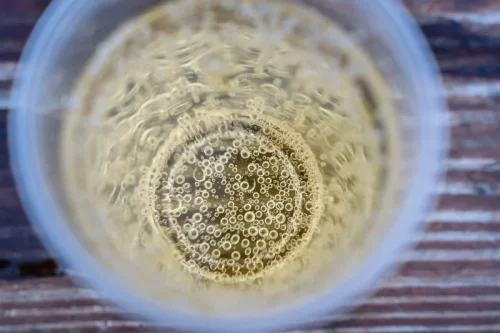
Because your brain stops functioning properly, you may crave alcohol even more. However, as they consume more drinks, an individual is likely to become sedated. Over the long or medium term, excessive drinking can significantly alter the levels of these brain chemicals. This causes the body to crave alcohol to feel good and avoid feeling bad. The problems relating to alcohol dependence are extensive, and its effects can be physical, psychological, and social.
Alcohol Use Disorder Comorbidities
However, it’s difficult to discern if drinking was the primary problem, or whether lifestyle choices such as diet and exercise influenced health outcomes as well. Before it becomes problematic, why do people turn to alcohol in the first place? One is simply its rewarding consequences, such as having fun or escaping social anxiety. Having an impulsive personality plays into the decision to seek rewards despite negative repercussions.
What are the other health consequences of drug addiction?

Give us a call or complete our convenient online form to get in touch with one of our addiction treatment specialists. The National Institute on Alcohol Abuse and Alcoholism now identifies alcoholism as an Alcoholic Use Disorder or AUD. This identification allows for specifying how severe alcohol use is. We are dedicated to providing you with the support and healing you deserve. This holistic treatment strategy is vital for ensuring long-term recovery and overall well-being. Research from 2019 found ACT may help people who haven’t benefited from existing AUD treatments, but larger studies are needed to support its effectiveness.
Long-Term Risks of Alcohol Dependence

Seeking professional help early can prevent a return to drinking. Behavioral therapies can help people develop skills to avoid and overcome triggers, such as stress, that might lead to drinking. Medications also can help deter drinking during times when individuals may be at greater risk of a return to drinking (e.g., divorce, death of a family member). When healthcare providers screen for this condition, they look at drinking behavior patterns within the last Why Alcoholism is Considered a Chronic Disease year to determine a diagnosis.

Doing this in advance will allow time for both people to process the discussion and set clear expectations. Cognitive behavioral therapy is another path, available in person or online. Non-abstinence-based recovery models—such as Moderation Management—advocate for reducing one’s alcohol consumption rather than abstaining completely. The later stages of addiction can yield physical changes, but behavioral signs can help detect it early on.

Health risks of alcohol use
A good first step is to keep a record of how much alcohol you drink and of when you don’t drink throughout the week. Alcohol affects your brain, making you feel relaxed in a small amount of time. As you drink more, you become intoxicated and unsteady, and you might do or say things you normally won’t. People who have AUD may continue to use alcohol even though they know it is causing social, health, economic, and possibly even legal problems in their life. Discover how to build resilience and recovery, one small step at a time. In a clinical setting, motivational interviewing, which cultivates the drive to change behaviors, and Screening, Brief Intervention, Referral, and Treatment (SBIRT), which funnels patients to treatment, are also helpful options.
This means that when people with the disorder are abstaining from alcohol, they are still at increased risk of resuming unhealthy alcohol consumption, even if years have passed since their last drink. In this disorder, people can’t stop drinking, even when drinking affects their health, puts their safety at risk and damages their personal relationships. Studies show most people can reduce how much they drink or stop drinking entirely. Footprints to Recovery offers a full continuum of addiction and mental health treatment programs that include individual therapy, group therapy, and family therapy using the techniques above and others.

How can you prevent alcohol use disorder?
- You might also hear this called “pre-alcoholic.” At this stage, you might drink to escape something going on in your life or to relax and feel better about yourself.
- Yale Medicine’s approach to alcohol use disorder is evidence-based, integrated, and individualized.
- Many people with AUD do recover, but setbacks are common among people in treatment.
- All patients start in the alcohol detox unit and progress to an evidence-based treatment program that is personalized for their needs.
- Alcoholics Anonymous is one example; it offers a structured 12-step path toward recovery with a community of support from those who have dealt with similar challenges.
Socially, alcoholism may be tied to family dysfunction or a culture of drinking. Mild is classified as 2 to 3 symptoms, moderate is classified as 4 to 5 symptoms, and severe is classified as 6 or more symptoms, according to the DSM-5. Mental and emotional symptoms occur long before physical symptoms appear. If behavioral or mental symptoms aren’t appropriately treated, long-term alcohol abuse can lead to physical complications such as cirrhosis of the liver, chronic brain deterioration and, the most serious consequence of all, death.
Like depression and other mental illnesses, addiction is a very real medical disorder that is rooted in brain changes—but the condition is so much more complex than that. In earlier versions of the DSM, alcoholism was categorized as a subset of personality disorders. Mutual-support groups provide peer support for stopping or reducing drinking. Group meetings are available in most communities at low or no cost, and at convenient times and locations—including an increasing presence online. This means they can be especially helpful to individuals at risk for relapse to drinking.
